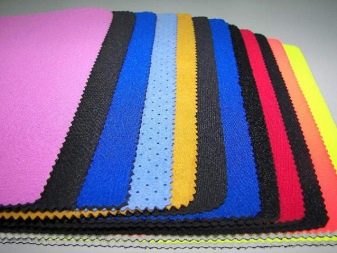The composition of neoprene due to the peculiarities of its production. The canvas is made in several stages. Petrochemicals are taken as raw materials, mini-granules are produced using chloroprene, which becomes the base material.
As a result of the high-tech process, these granules are combined and form a rather sticky mass. A coloring and foaming composition is poured into it, thereby a thick substance is formed, which is sent to the oven, is heated intensively and under the influence of heat it turns into foam. As a result of heat treatment, long thick black layers are formed, cut into thin layers so that each is no more than 1 cm thick. These sheets are very unattractive, therefore, to improve their appearance, as well as to improve strength characteristics of the glued layers with other materials (most often with polyester).
Thanks to this unusual technology, a unique material is obtained, consisting of a large number of cells filled with nitrogen. This structure affects the heat-conducting properties of the canvas.
- the material is completely waterproof, thanks to this property it is, in most cases, used for the production of wetsuits;
- Neoprene retains its physical and technical properties in a wide temperature range - from -60 degrees to +90;
- neoprene is heat resistant, keeps the human body warm and does not allow a person in such a suit to freeze;
- the fabric retains its integrity under the influence of saline solutions and some types of chemicals, in addition, the ingress of oil does not damage the mesh;
- the material is highly durable, so a person is protected from various cuts and scratches, and besides, the canvas is able to significantly mitigate any impacts and mechanical damage;
- neoprene does not accumulate static electricity inside its fibers;
- characterized by hypoallergenic;
- neoprene refers to materials of increased fire resistance;
- It is noteworthy that, with such strength characteristics, the canvas is flexible and soft enough so that it can be worn freely for sports clothing: it does not restrict movement at all.


